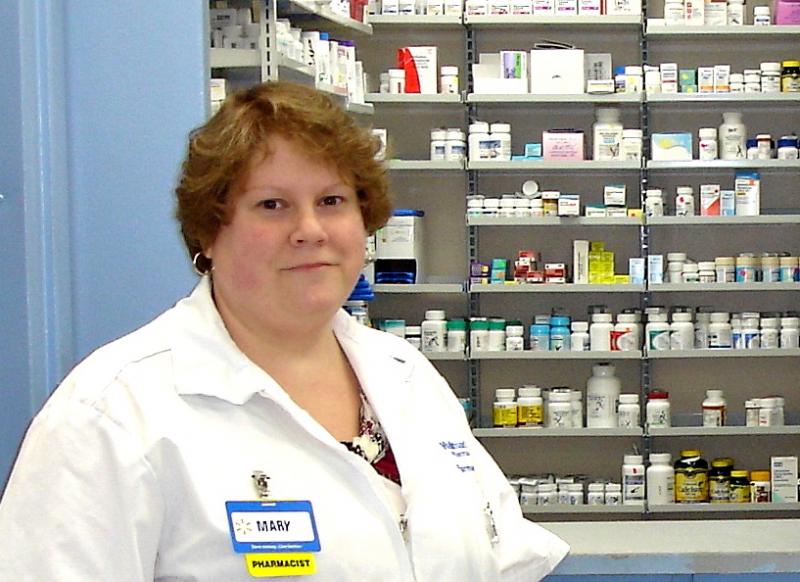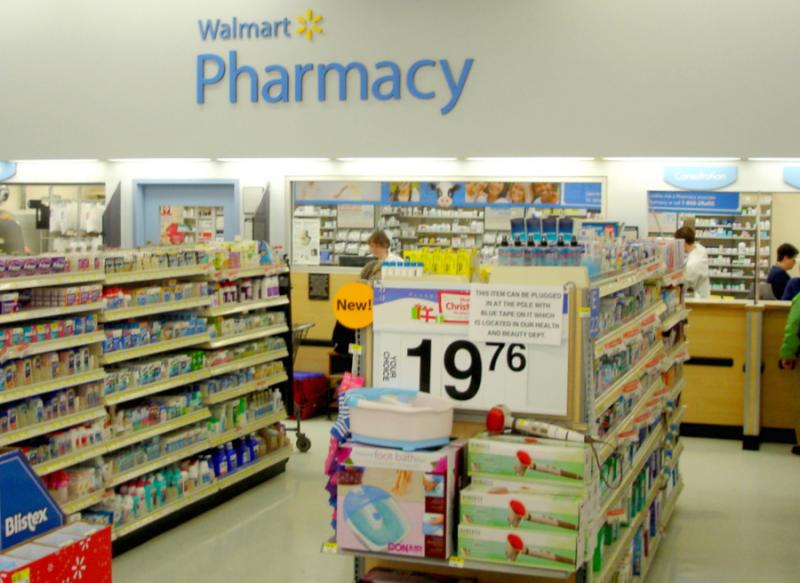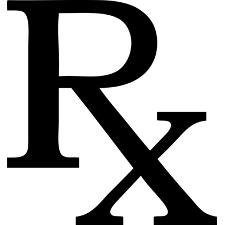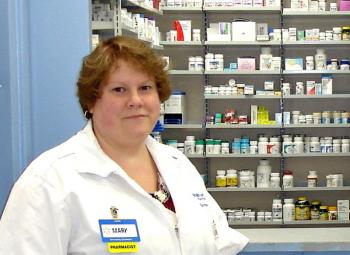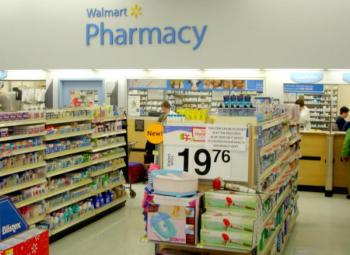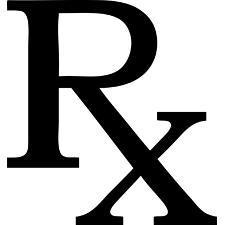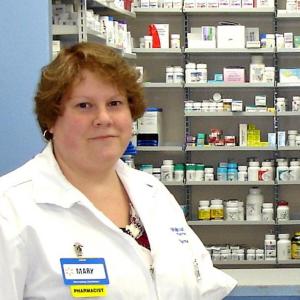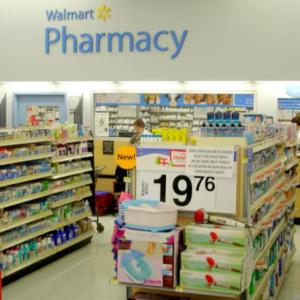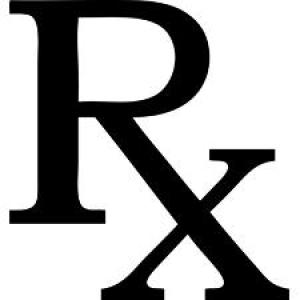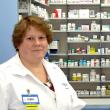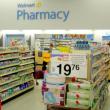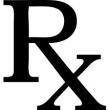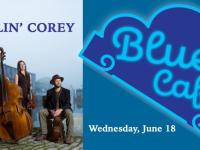It's her job to talk with people, help them be informed
Dr. Mary Louise Curtis, 43, of Owls Head, enjoys her job as a pharmacist at Walmart. And she likes Rockland.
“It’s just the right size,” said Mary. “I’ve lived here most of my life.”
After graduating from Lyndon State College in Vermont in 1991, Mary took a job as a pharmacy tech at Hannaford’s Supermarkets in Rockland.
“Two pharmacists I was working with saw I had an aptitude for pharmacy," she said. "They encouraged me to go back to school. In 2001, I went back and attended the Massachusetts College of Pharmacy and Health Sciences in Boston, receiving a degree of Doctor of Pharmacy in 2008.”
Was it hard to go back to school after being out for 10 years?
“Sitting was actually the hardest thing about school,” recalled Mary. “In the pharmacy you stand 10-12 hours a day. Working as a pharmacy tech I got very used to that. Sitting eight hours a day in classrooms just about killed me. I think that had to be the hardest thing about school. Sounds dumb I know, but that was it for me.”
Mary said she had the job she wanted before she finished school.
“Prior to graduation, I think it was November, I interviewed with eight companies and got eight offers for employment so I got to pick the one I wanted. Florida was the furthest away. I chose Walmart because it happened to be in my backyard. And Walmart really did have the best offer.”
As a pharmacist, Mary oversees employees, pharmacy techs and cashiers.
“Two pharmacists watch the pharmacy, and then there’s a pharmacy manager over me. We split the duties, though there are not a set number of things we each do. If one of us is busy the other one does it and vice versa. We work together. It’s a good team.
“I interpret written prescriptions, but they also come in other forms besides hard-copy. They can come in by telephone, what we call an e-script, or by fax. Whatever form it comes in a pharmacy tech will enter it into the computer. We have the ability to scan the hard copy right into the computer, so that gives us another record. The pharmacist checks it. There’s a four-point check we use. If it’s correct it goes to the techs and they pick the drugs off the shelf. They scan a bar code on the drug to make sure it’s the correct drug and they count out how many the prescription calls for. It’s put in a container and labeled, then back to a pharmacist where it's checked visually against a national drug code to make sure it’s the right drug. Then it gets checked and verified against the prescription again. If all is right it’s considered 'filled' and goes to the rack where it waits to be picked up.”
In light of recent crimes around pharmacies does she feel secure inside the facility?
“We are well inside Walmart so we feel pretty secure. We’re not near an entrance or exit and there’s a fair amount of security inside the store.”
Is prescription, narcotic abuse a problem?
“Yes, there is a problem and I believe it’s fairly serious," she said. "It appears the state is starting to take a closer look at doctors who write a lot of prescriptions for narcotics. We’ve heard there are doctors in the area who are doing random drug testing. Letting them 'pee in a cup' before they get a prescription. We also sell needles, but a person has to speak to someone and have proper ID to purchase them.”
A clinical conference was held at Pen Bay Medical Center this past October. It outlined a system for addressing what it called the, 'epidemic,' of substance misuse in Knox County.
John Lipovsky, the prescription drug monitoring coordinator for the Maine Office of Substance Abuse and Mental Health, updated doctors on Maine’s Prescription Monitoring Program that was adopted by Pen Bay’s Board of Trustees in 2011.
In the conference, an article that appeared in the Canadian Medical Journal cited that real time monitoring programs has reduced the incidence prescription drug abuse by a third to half.
Under state law, a pharmacist may exercise discretion and refuse to fill any prescription or dispense any drug if he or she is unsatisfied as to the legitimacy or appropriateness of any prescription presented.
Dispensers of controlled substances in Maine are required to submit their transactions to SAMHS' data management contractor. The data must be for all transactions involving Schedule II to IV drugs.
The program uses measures to carefully protect patient confidentiality. Access to the data is limited to registered users. However, a person can make an appointment with SAMHS’s office to see the information that is on file for them. Patients can also access this information through their health provider.
Did you know that in Maine, more people died from prescription drug overdoses than in car crashes in 2008, 2009 and 2010? (Source: SAMHS)
Most narcotics are derived from opium. Opium is a crude extract of the seed capsules of the poppy, Papaver somniferum, which contains the opiate alkaloids morphine and codeine. The earliest written records of the profound recreational and medicinal effects of opium date from approximately 4,000 BC. Chemical modifications of codeine and thebaine have produced the opioids hydrocodone (Vicodin) and oxycodone (Oxycontin), both of which are stronger than codeine and are popular drugs of abuse.
Are you opioid dependant: A test.
From 1969 to 1975, there was a rapid rise in prescription amphetamine use in the United States. The drug was everywhere and rapidly available in many forms. Everyone was using it, from students cramming for an exam thinking the drug would enhance their learning capabilities, to factory workers putting in long shifts, or executives keeping pace with a long-houred, frantic business world.
And as George Carlin said, “Mom found a lot more than dieting in those pills.”
The government got alarmed about the widespread use. Amphetamines were reclassified as a Schedule II drug. By 1975, the government began looking closer at prescriptions for the “diet pills,” as they were commonly referred to. By the late 1970s, you would be hard pressed to find a prescription for an amphetamine. Through prescription monitoring and policing, state and federal governments were able to curtail their abuse.
“Those drugs are still around," said Curtis. "They get prescribed for ADHD and ADD patients, both children and adults."
The drug is prescribed as a fractional dose and only used after other methods have failed.
“Cholesterol and diabetes are by far the most common prescriptions I see,” said Mary. “We as a society are heavier [body mass]. And there’s been a lot of research done on the two, so there is an increased awareness. It seems to me we are the kind of society where if we can cure it with a pill, we’d rather do that than alter our lifestyle.”
It’s part of her job to talk to you.
“I think patients as a whole are intimidated about how much time they can spend with their doctors," she said. "Doctors are very busy people. A pharmacist can take more time to answer a question about a drug they’ve been prescribed. We’re there. It's part of my job to talk to people and help them be informed. I can’t diagnose, of course. I don’t have lab work or medical histories to look at, but if it’s a question about the medication I’m happy to take the time to talk to someone.
“Tick bites are the most common question. We see a lot of that and it’s year-round. Tick season is April through December. People have a lot of fire wood that gets carried inside and the ticks are on the wood. There are always lots of questions about cold medicine and allergies; people want to know symptoms and treatment. Anything you can treat with over the counter medication is open to a lot of questions.”
Walmart operates more than 4,000 stores in the United States alone. Once you’re in the system you can go to any Walmart in the country to get your prescription filled.
The traditional RX symbol cannot be represented on a typewriter keyboard. It’s an R and an X which are merged to resemble an R with an extension and a line running diagonally across it. The R part of the symbol stands for the Latin 'recipere' which means 'take this' and it is related to the word recipe. The X part of the symbol is derived from the symbol for the Roman God, Jupiter. It represents a prayer to Jupiter that the treatment would result in a cure. So you could say RX means “'take this and pray.” It goes back to ancient Roman times when people believed that if you were sick, it was because you had offended the gods and the illness was retribution.
Event Date
Address
United States

